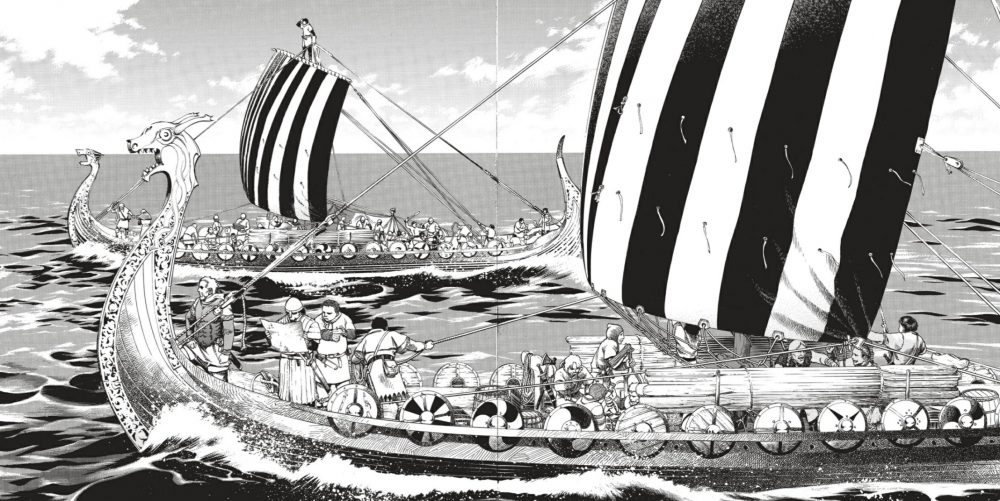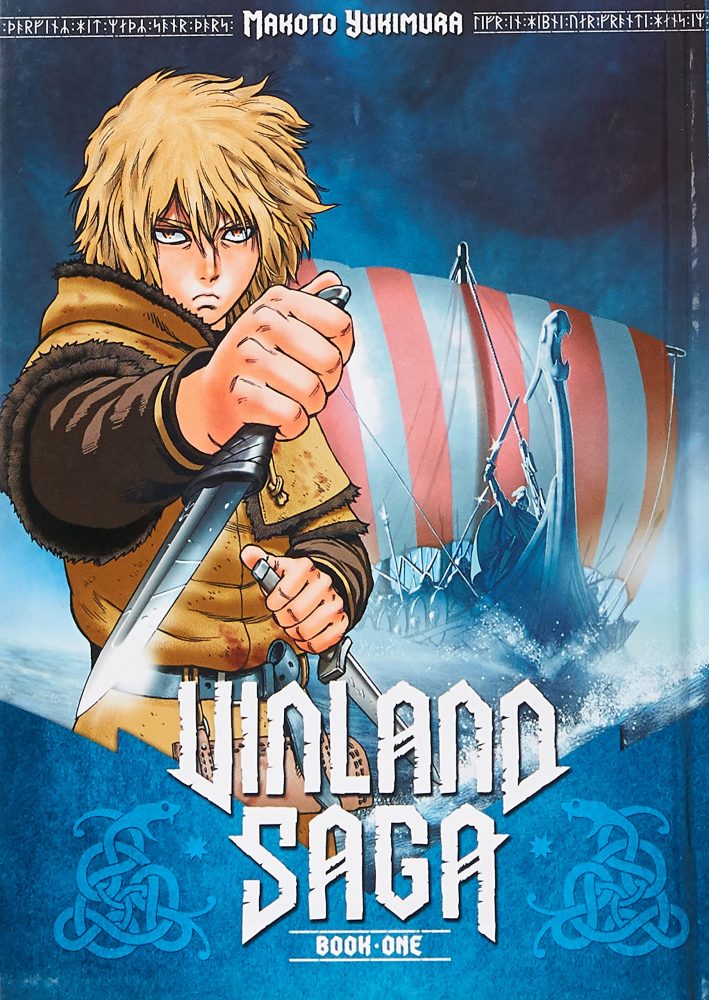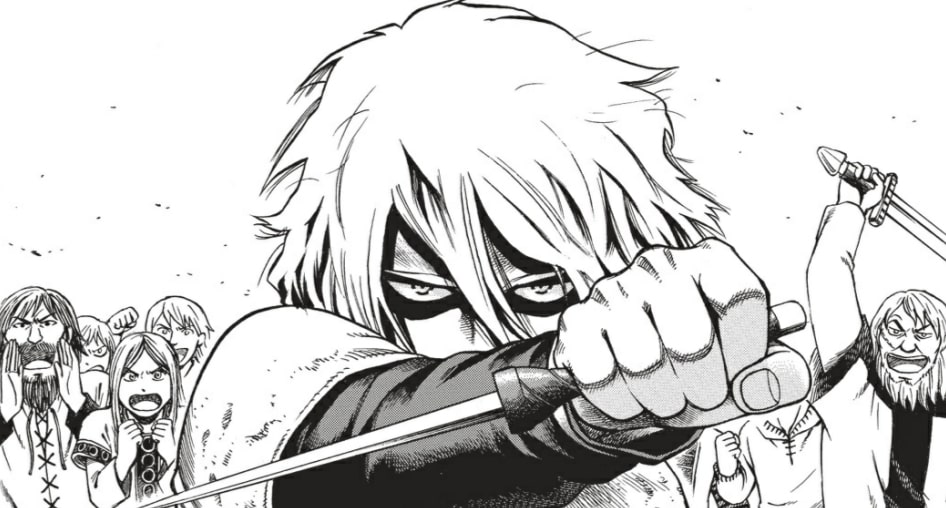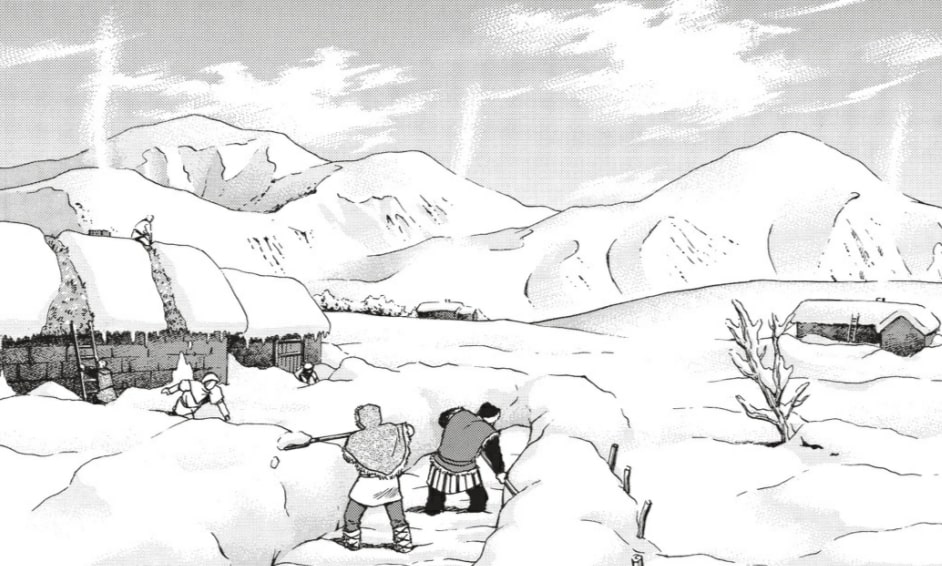Created, written, and drawn by Makoto Yukimura, the Vinland Saga manga is a historical epic and a true work of manga genius. Here’s why.

Manga come and manga go. Some great manga become symbols of the medium; the first thing on our lips when we recommend manga to our friends (Berserk and Dragon Ball spring to mind).
Others develop a cult status. They aren’t the most popular, but they are truly beloved by hardcore manga fans (Oyasumi Punpun fits this bracket nicely).
The Vinland Saga manga sits somewhere between these two types of great manga: it’s bigger than a cult favourite but not one of the all-time heavy hitters either. Wherever it falls, it cannot be overstated that Makoto Yukimura’s Vinland Saga manga is a masterpiece.
The Narrative Genius of the Vinland Saga Manga

Before Vinland Saga, mangaka Makoto Yukimura made a name for himself with the hard sci-fi seinen manga Planetes, which ran for five years, from 1999-2004. Almost immediately after, he shifted from astronauts to vikings.
The narrative genius of the Vinland Saga manga can be clocked within the first few chapters. In spite of the manga’s dizzying length, it doesn’t take more than a handful of chapters to feel dwarfed by the scope of what Yukimura is going for with Vinland Saga.
The first two chapters of the Vinland Saga manga drop the reader into the heat of the action, in medias res, with a raid on a Frankish stronghold. A man named Askeladd is leading his band of mercenaries to aid the attacking army.
Askeladd is the closest thing we have to a protagonist in these two chapters. He makes a deal with the raid leader, masterminds the attack, and we follow along, watching the skirmish unfold.

One of Askeladd’s tactics is to send a young boy named Thorfinn, alone, to discuss their terms with the leader of the attacking army. In exchange, Thorfinn is after a very specific reward.
When the attack is done and the mercenaries win the day, Thorfinn collects his reward: a duel with Askeladd. As it turns out, Askeladd murdered Thorfinn’s father.
Chapter 3 of the Vinland Saga manga throws us back several years, and several hundred miles north, to Iceland. Thorfinn is six years old.
The Vinland Saga manga begins with a mercenary named Askeladd, our protagonist. Then, in the blink of an eye, Askeladd is reframed as a villain and a younger Thorfinn is our protagonist: a boy living in a quiet, remote Icelandic village with his family.
From here until Chapter 16, we see life through the eyes of young Thorfinn, though he is still not really our protagonist. For these fourteen chapters, our hero is Thorfinn’s father, Thors.
After Chapter 16, Thorfinn finally takes centre stage, but the prologue is still not over; not until Chapter 54.
I’m spelling all of this out in numbers to demonstrate the scope and scale of Vinland Saga’s story, and what Makoto Yukimura is building here. Rarely, outside of fantasy series’ like The Wheel of Time and Lord of the Rings, do we see such narrative ambition.

Across this prologue alone, we not only shift our perspectives, but we do so for a very specific reason: to balance our characters, themes, and setting.
Seeing the Viking world of Western Europe and Scandinavia through the eyes of heroes, villains, and boys gives the place weight and dimension. This is not a world of heroes and villains; it is a world of people. It is a cold and difficult world, but also one of opportunity.
There is rarely a moral, thematic, or even emotionally consistent throughline in the Vinland Saga manga. The complex actions of its complex characters surprise us constantly. There are contradictions, betrayals, moments of growth, and satisfaction never found.
This is what makes the world and the narrative of the Vinland Saga manga such a rich and textured one. Characters like Thorfinn and Askeladd do not feel as though they exist to service the plot or satisfy the readers’ need for resolution. They are too busy living.
Buy Volume 1 of the manga here!
The Visual Beauty of Vinland Saga
A manga is made up of two parts: writing and art. A good mangaka ensures that one compliments the other. A great mangaka like Makoto Yukimura uses writing and art to elevate one another.

In fact, “uses” doesn’t seem like the right word. It is more like encouragement. Yukimura’s mastery of plotting and characters intertwines with his visual worldbuilding and cinematic direction to create something wholly perfect.
A Viking setting is so ideal for a medium drawn in shades of black and white. Yukimura brings texture to the bleak and desolate landscapes of Scandinavia over and again in new and exciting ways.
His backdrops are stunning, shifting between layers of intricate detail and a sparse, calming openness. This shift between the two also happens when the emotions of his plot’s events call for it. This is the intertwining I mentioned.
Beyond his visual presentation is the way in which he animates the action of the Vinland Saga manga. Like many great mangaka of the shounen and seinen genres, Yukimura is a master of fluid action that leaps from the page.
Vinland Saga is full of extensive dialogue and moments of quiet reflection, but when the action comes, it hits hard. The world becomes a controlled explosion, and Yukimura is at once the director, choreographer, cinematographer, and camera operator.

The Power of Translation
At Books and Bao, our focus is on literature in translation, and that includes manga. Unfortunately, manga translators often get overlooked, which is why I want to make sure to emphasise here just how phenomenal Stephen Paul’s translation of the Vinland Saga manga is.
Stephen Paul is a manga translation legend; translator of One Piece, Sword Art Online, Tensura, and more. And in Vinland Saga, his translation work really shines.
Paul has such playful energy here, using real empathy and savvy to plunder the depths of the English language (like the best authors) to ensure that every scene and bit of dialogue hits as hard as Yukimura intended it to.
So many charming turns of phrase are used repeatedly by Paul to establish each character through their ticks and demeanour. This is manga translation at its finest.

What if I’ve Seen the Vinland Saga Anime?
The Vinland Saga manga had been on my radar for a long time, but the anime came out before I had the chance to give the manga a fair shot, and Wit Studio knocked it out of the park. Vinland Saga became my favourite anime of all time.
For this reason, I put off reading the Vinland Saga manga for a full year after the anime’s first season wrapped, happy to wait for more of the show. Until I wasn’t anymore.
The anime does a staggering job of faithfully adapting the Vinland Saga manga, in terms of art direction, emotional impact, story beats, plotting, pacing, and character writing. That said, the manga still remains a masterpiece and, therefore, essential reading.
Season 1 of Vinland Saga covers the first 54 chapters of the manga; in other words, the entire prologue. So, if you choose to, you can skip to Chapter 55 and begin the manga there.
I didn’t do that, and I don’t think you should either. Put the anime aside and dive into the Vinland Saga manga from page one. You’ll be glad you did.



